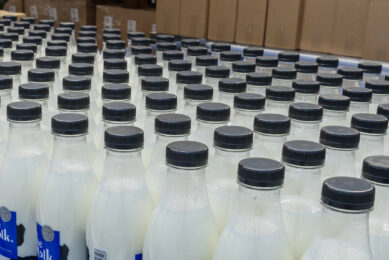Australian dairy proves resilient in the face of pandemic

Farmgate milk prices remain on the high side across much of the world, and at near-record levels for Australian dairy farmers, according to a new Rabobank report.
Australian dairy farmers have positive farm margins and most are experiencing healthy on-farm profitability, says Rabobank’s senior dairy analyst, Michael Harvey.
Near-record milk prices, affordable purchased feed prices and supportive seasonal conditions have set many Australian farmers up for positive trading conditions ahead. The cost of fertiliser has jumped but it has only had a “slight negative hit on farmgate margins,” Harvey says. The majority of Australian dairy farmers are locking in near-record milk pricing for the current season.
Revised milk price
Rabobank has revised its farmgate milk price up to US$5.14 per kg milk solids for the 2021-2022 season. “While this is broadly in line with the official farmgate milk prices range, it also takes into account the limited upside in global dairy markets for the remainder of this season,” Harvey points out.
Australia: Working on the cows of the future
Victorian scientists in Australia will be working on methods to reduce the environmental footprint of the Australian dairy cow and to create a more profitable and sustainable dairy sector. Read more…
Australian dairy farmers look ahead
Harvey says Australian dairy farmers are also heading towards a favourable spring peak. Rabobank forecasts milk production growth to be up 1.5% in 2021-2022, to 8.9 billion litres – a level not reached since 2017-2018. “With the spring peak just around the corner, conditions on the farm remain very favourable with the latest seasonal outlooks pointing to average winter-spring rainfall in key production regions,” says Harvey.
This is also boding well for irrigators, with lower water prices and increased allocations as demand from competing crops has subsided.
The potential for global demand shocks limited
Dairy export volumes are also up, with liquid milk and milk powders leading the way. “Export activity remained upbeat throughout the first half of the year and as at mid-2021, dairy export volumes across most of the dairy commodities were higher than year ago levels,” Harvey says.
In the Australian domestic market, current lockdowns are leading to ongoing channel distortion in dairy markets. “With a large proportion of consumers in lockdown due to the delta variant, the Australian consumer market is on a rollercoaster,” Harvey says. Pantry-loading seems to be less pronounced this time round and dairy consumption seems to be holding firm in the face of all this uncertainty.
The report says that while some regional disruptions will continue to occur as a result of Covid-19 and uncertainty remains, the potential for major global demand shocks is limited, with downside risk to the global dairy market more likely to stem from the anticipated slowdown in Chinese import demand.
Case study: Livestock feed demand in Australia declines
The healthy production year for Australian grains forecast for MY 2021/22 comes after a strong drought-recovery year in MY 2020/21. However, livestock feed demand in the country has declined since the rains began in early 2020. Read more…
Supply is expected to outpace demand in China, as domestic production and inventories increase. The country’s imports are expected to start to decline in the second half of this year, the report says. “Global markets may be able to absorb lost sales through 2021, but pressure will be felt in 2022, initially in Oceania, but eventually rippling through global dairy markets. With prices heavily dependent on import demand, the near-term peak in global dairy commodity prices is likely behind us.”
Global milk supply has been on an extended run of interrupted growth which is set to continue, the report says, albeit at a slower pace. “The growth rate has been sustainable without becoming overly burdensome on markets so far, but any slowdown in global demand would quickly lead to inventory build,” the report says.
Little relief on horizon for feed costs
The report cautions while milk prices are mostly higher worldwide, farm margins are mixed. “High feed prices and general input cost inflation are a common thread, but the ability to withstand the cost pressures depends on the milk price,” it says.
Much of the world, including the Australian dairy sector, is experiencing high enough milk prices to offset higher costs, but margin pressure is creating headwinds in the US and EU. Persistent margin pressure has disrupted a year-long streak of increasing cow numbers in the US while, in the EU, milk prices are barely keeping up with the rising input costs.
And there is little relief on the horizon for feed costs, the report says, with poor US corn crops and the failure of Brazil’s safrinha crop. Rabobank points out that while all eyes will be on China as the global dairy market remains heavily dependent on import demand, there are other factors to watch. These include ongoing logistic disruptions, inflationary pressures not only at the farmgate but along the supply chain and the impact of the delta variant and new Covid-19 variants on global economic growth.
Join 13,000+ subscribers
Subscribe to our newsletter to stay updated about all the need-to-know content in the dairy sector, two times a week.










